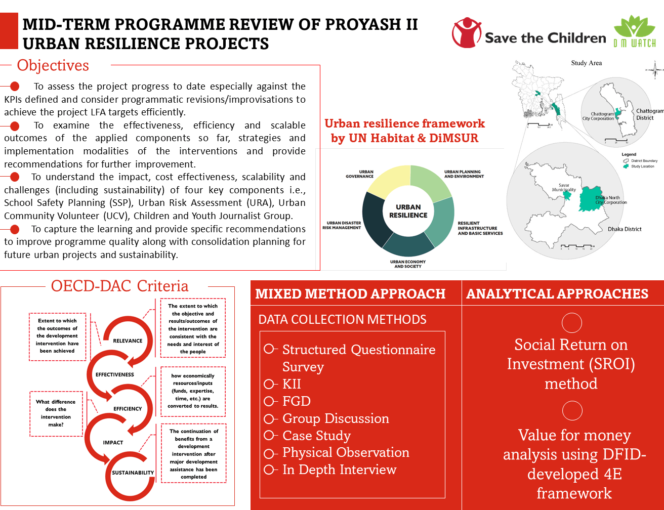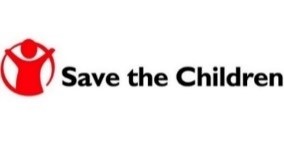

Mid Term Programme Review (MTR) Proyash II Urban Resilience Project

Proyash II is an urban resilience project considering the project period from 2018 to 2023. The major objective of this project is to strengthen the preparedness and resilience of urban slum population against disaster shocks and stresses. The geographic coverage of the project includes Dhaka North City Corporation (DNCC), Chattogram City Corporation (CCC), and Savar Municipality. The project is being implemented in collaboration with the two implementing partners—Social and Economic Enhancement Programme (SEEP) and Young Power in Social Action (YPSA). To accomplish the objectives, the project focused on several key components, including mainstreaming disaster risk reduction into urban development, strengthening local actors’ capacity for disaster management, engaging local communities in risk reduction, advocating for child-friendly cities, school safety management, and resilient livelihoods for women and youth.
Disaster Management Watch (DM WATCH) was commissioned to conduct a mid-term review (MTR) of the project to evaluate its success and likelihood of adopting the lessons learnt. The study team adopted a mixed method approach, combining both qualitative and quantitative methods. The review focused on five criteria of evaluation from the OECD-DAC framework: relevance, effectiveness, efficiency, impact and sustainability.
To assess the efficiency of the interventions, this MTR used the Department for International Development’s (DFID) 4E framework in terms of Value for Money (VfM). Additionally, the study employed the Social Return on Investment (SROI) technique to determine the financial value. The quantitative data were collected from 396 samples using a stratified random sampling technique. Non-probability sampling technique was employed for the collection of qualitative data from the targeted respondents. A total of 54 qualitative samples were taken including KIIs, FGDs, Group Discussions with implementing partners and project staffs, case studies, physical observations and IDIs. Analyzing the collected data, a set of recommendations along with evaluation response plan was provided. Some challenges were also identified and lessons learned were documented properly.
© 2023 DM WATCH LIMITED. All Rights Reserved
